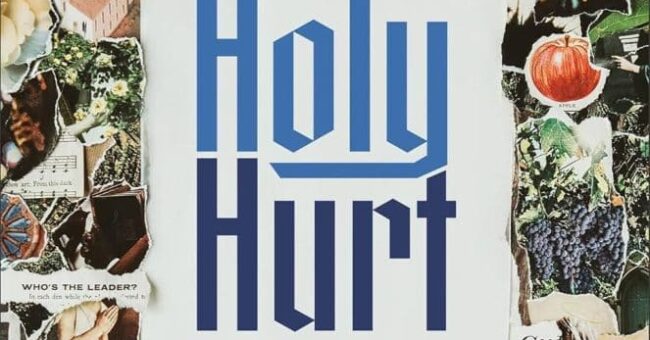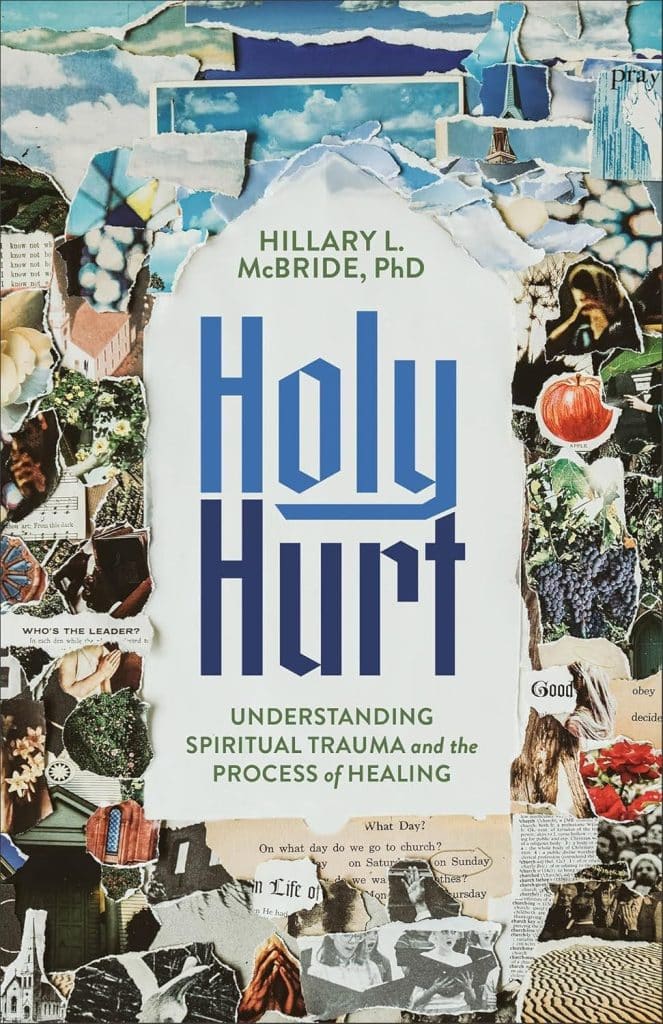
Too often the institutions and communities that are meant to be the most holy in our lives end up deeply hurting us. In Holy Hurt, clinical psychologist Hillary L. McBride sends a sincere and profound message: spiritual trauma is real and has a far-reaching impact. She also reassures us that we can remake ourselves and heal in its aftermath. McBride expertly and compassionately shows that acknowledging the impact of spiritual trauma in our lives allows us to begin to tend our wounds individually and collectively, experiencing reconnection with ourselves and others. She draws on clinical research, trauma literature, insightful interviews with experts, and poignant first-person stories, ending each chapter with a short practice to begin healing.
McBride empowers those who have lived through spiritual trauma or witnessed it, as well as those who want to develop healthier church environments and prevent abuse.
Adaptation from Holy Hurt by Hillary McBride
Adapted from Chapter 2, “Shards of Glass”
One evening in 2022, I was greasing a baking dish before filling it with brownie batter. I pushed hard into the corners of the dish and felt a sharp, hot flash of pain in the tip of my middle finger. Blood pooled in the dish. I rushed over to the sink, the blood dribbling down my finger and across the floor. As I held my open palm under the cold running stream, the water cleared away the blood enough that I could see there was a shard of glass sticking out about an eighth of an inch. I had no idea how the glass got into the dish, but it was now in my finger.
I was able to grab it with my other hand and pull it out. Then I had a glimpse, the briefest flicker, of more glass buried in my finger. I kept the wound under the stream of water, hoping the bleeding would stop and I would be able to get a better look at it. I poked and prodded, and eventually I called my mom and some medically knowledgeable friends. They reassured me that the glass would come out on its own. When the bleeding slowed, I could not see anything, so I put a Band-Aid on my finger and went to bed.
In the following days, I soaked my finger in hot, salty water numerous times. Gradually, the cut started to heal. I was glad it didn’t get infected, but I was frustrated and aggravated by the constant irritation that I could do nothing to resolve. I would have done anything—including cutting my finger back open—to get the buried shard out if I didn’t have some very smart people reminding me this likely wouldn’t go well. I knew the glass was in there but couldn’t get to it—and it was extraordinarily painful.
In the coming weeks, every time I touched something with my right middle fingertip—car keys, keyboard, forks, water bottle, my own hair—it felt like my flesh was getting sliced open again. Yet at this point it looked like a perfectly healthy finger. If someone inspected it and knew the story, they could detect a small lump deep under the surface of my skin. Something was definitely there, but it was invisible if you didn’t know to look for it.
Months passed, and I began to notice changes in the way I did things. I held a pen differently when writing. I held my hand differently when typing to avoid the pain. I also began to wonder if there was really anything in there. The mound on the end of my finger had flattened. As I thought back to the flicker I saw after pulling the first piece of glass out, I wondered, “Did I really see anything else? Maybe there wasn’t a shard in there after all and this was simply my body’s reaction to all the poking and prodding I had done to get out a piece of glass that was never actually there.”
Then, midsummer, a small lump started to form about half an inch below where the glass had originally gone in. It was painful to the touch, felt dense, and looked slightly red. Why was it showing up in a different place? As summer went on, the mound seemed to grow a little each day, and eventually in September it looked like a little mountain. It was more painful than ever, and I would often unconsciously touch it while doing other things, pressing the sides, trying to encourage it along. Then, on a Friday in late September when we were on vacation as a family, it opened at the top and watery fluid started to leak out.
(Thought you were reading a blog post about spiritual trauma instead of an essay about a minor finger injury? Hang in there.)
The next day I was reading my daughter a book in the backseat of a rental car as we cruised down a freeway, and of course I was also low-key pressing the sides of this finger mountain—almost out of habit by this point—when the glass suddenly poked through. I yelped. There it was: half out of my finger and half in. My husband found a place to stop the car and pulled the shard the rest of the way out. It was so much bigger than I would have ever guessed—yet somehow also smaller than it had felt or seemed. We took ceremonial photos with the shard placed next to various objects to give a sense of the scale, as one does, and shared them with everyone we know. All said, the shard was in my finger for nine months minus a day.
A few weeks later, I started to make connections between my experience and spiritual trauma. My finger injury has much to illuminate about the injuries people experience that fester for so long that they seem like they are normal. Even if the injury was so long ago we can barely remember it, something really did happen, and it hurt us. Something that was never supposed to be in us—a story, a belief, an ache, a fear—got lodged inside and changed our way of being.
No matter how much we try to convince ourselves otherwise, how familiar the injury becomes, or how much our community ignores it, our bodies know the truth of what hurt us. Our bodies will keep telling us that something is not right. And because our brain-body systems are oriented toward health, that something will get pushed to the surface, even if it has been buried so long that we forgot it was there.
My memory of seeing that tiny speck of glass helped me to understand what was happening, and why. It was like a foothold for all those months when I was in pain—a coherent, easily identifiable why. I could say, “Of course it hurts. There is a sharp and dangerous foreign object in my finger, and my body is constantly communicating that the object is hurting me and needs to come out.”
Knowledge alone doesn’t heal trauma, but it does minimize the shame and fear that are caused by not knowing. Knowing can also prompt us to show compassion to ourselves, to ask for what is needed, and to articulate to others the source of the wound. When we know that something is there and where it came from, we can also begin to ask, “What does this need to heal?” Maybe we don’t know, but we might seek out someone who does.
Our bodies—bless our flesh and blood—say what we have been unable to say, what our voices and thoughts have been trained not to articulate. The story our bodies are telling is sometimes about right now, sometimes about what we’ve been through, and sometimes about what has happened to those in our family systems. But the story always, always, deserves to be heard. It is not a betrayal but rather a prophetic word to the systems or people who have done harm… Physical symptoms can be understood as the body’s instinctual drive toward restoration. They are not proof of any lack of faith, weakness, or badness. Rather, they are nature’s imprint within us, our bodies’ effort to process and complete what is unfinished and living on in and through us.
My bodily system, in its wisdom, knew the way to get something that didn’t belong inside me out. When the glass was nearing the surface in those last few days, my finger was hot, red, swollen, weeping fluid, and painful, even when I wasn’t touching it. It reminded me that healing can be gentle and graceful and slow, and other times painful, intense, and uncomfortable. At times it takes courage to stay with the process and let our system travel the road toward wholeness. Just as hurt can take many forms, healing can take many forms as well.
Even when it’s hard, attending to our trauma through integration and processing serves our growth and healing. Even if we have memorized a story that our bodies can’t be trusted, our nervous systems know the way to wholeness; it’s been written into us from the beginning.

You can read Hillary’s full story and more insights into spiritual trauma and healing in her new book, Holy Hurt, which is based on the Holy/Hurt podcast Sanctuary sponsored. Hillary shares the meaning of the title this way: “ The hurt happens in places we call holy, but it is the wound itself that is sacred. The hurt is holy.”
Adapted from Holy Hurt by Hillary McBride
Copyright © 2025 by Hillary L. McBride
Published by Brazos Press, Grand Rapids, MI. www.brazospress.com
Order from Brazos Press
You can read more on this topic in our blog post Recovering from Spiritual Trauma.
Blog post cover photo by Salah Ait Mokhtar on Unsplash
Hillary L. McBride, PhD, RPsych

Hillary McBride is a registered psychologist, an award-winning researcher, and the host of both the Other People’s Problems podcast and the Holy/Hurt podcast. She has a private practice in Victoria, British Columbia, and is a sought-after speaker and retreat leader who specializes in embodiment. Hillary’s work has been recognized by the American Psychological Association and the Canadian Psychological Association. She is the author of Holy Hurt: Understanding Spiritual Trauma and the Process of Healing, The Wisdom of Your Body, Practices for Embodied Living, and Mothers, Daughters, and Body Image, and coeditor of Embodiment and Eating Disorders.
The post Shards of Glass: Spiritual Trauma and Healing appeared first on Sanctuary Mental Health Ministries.